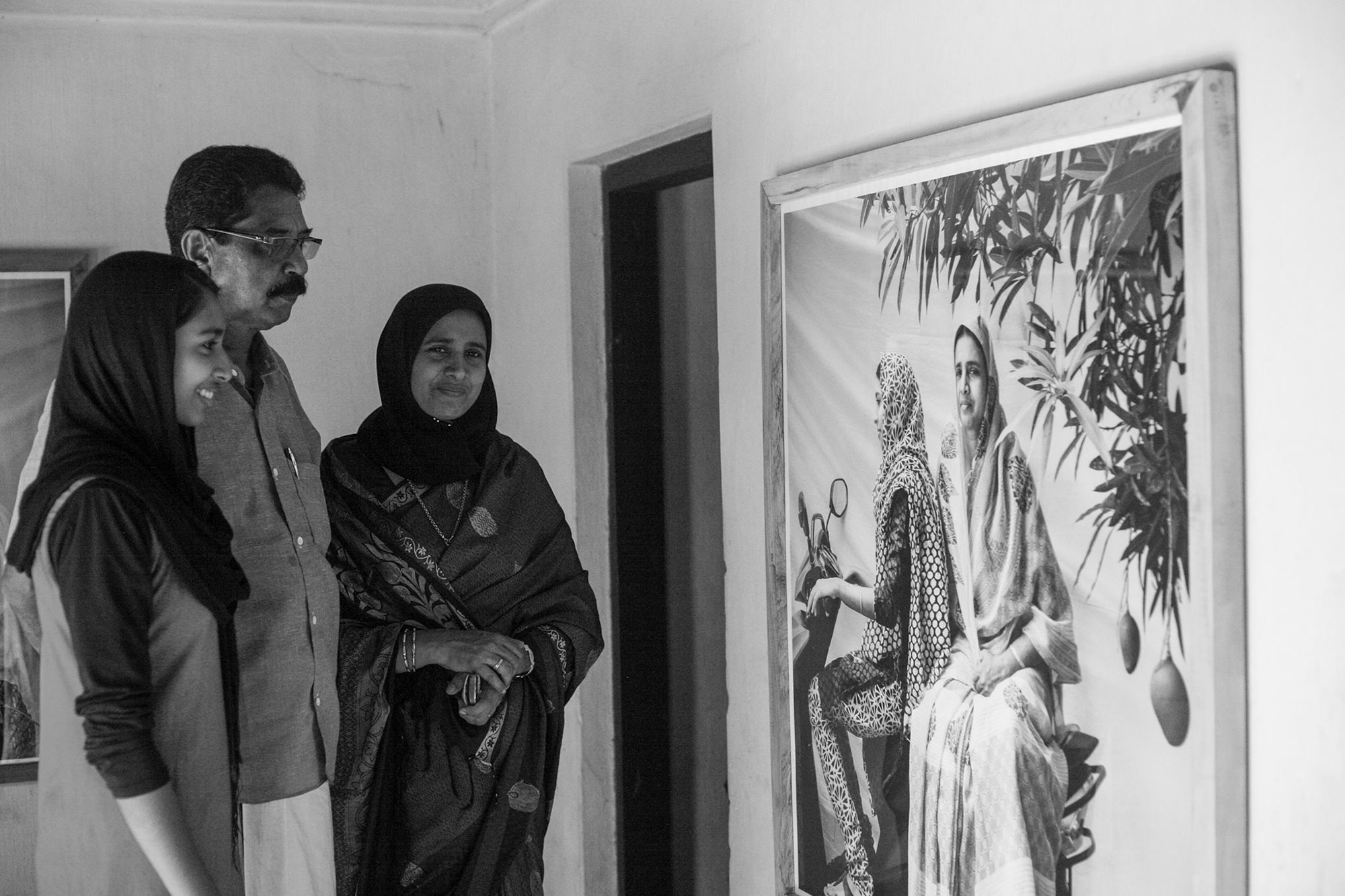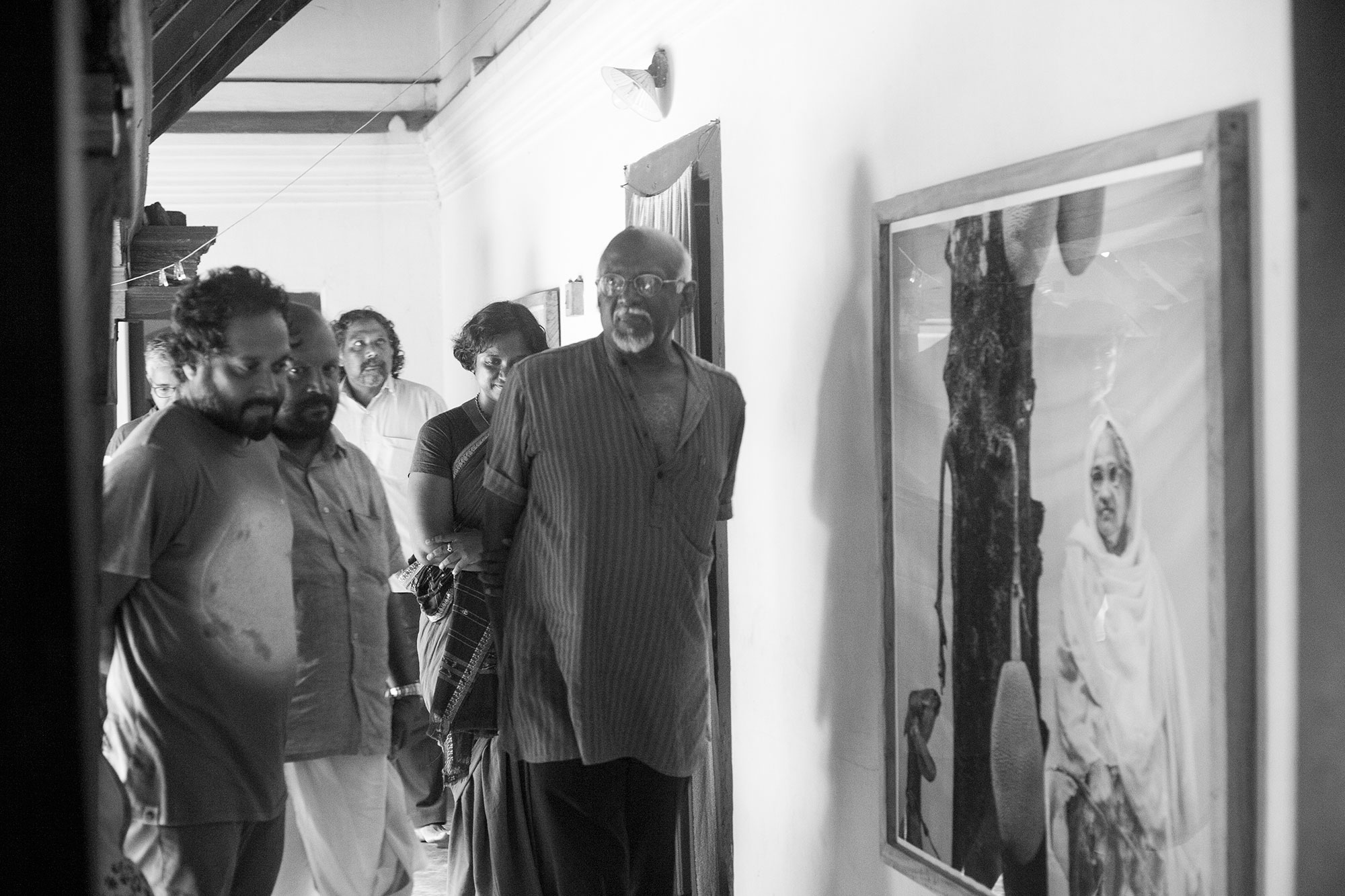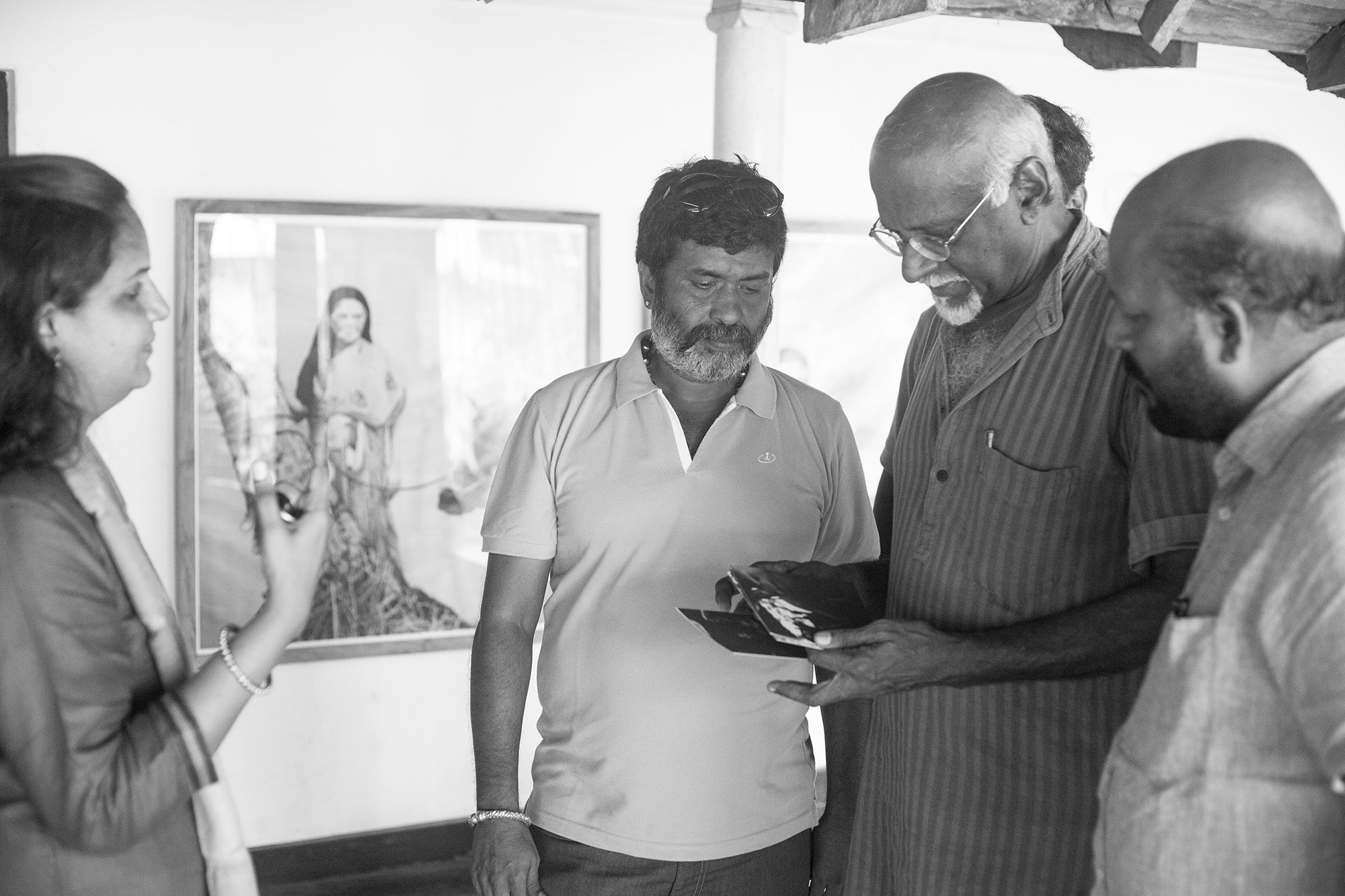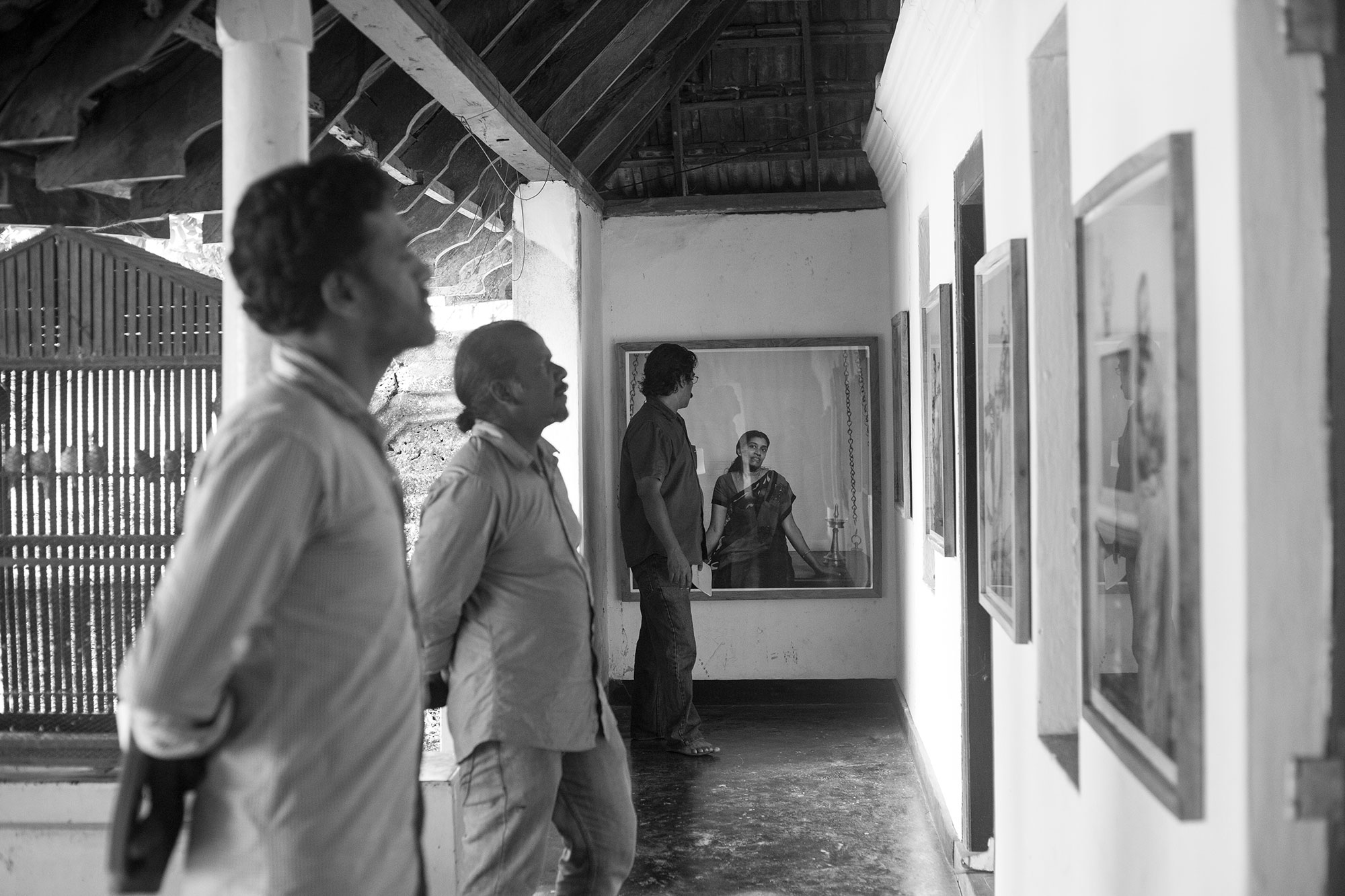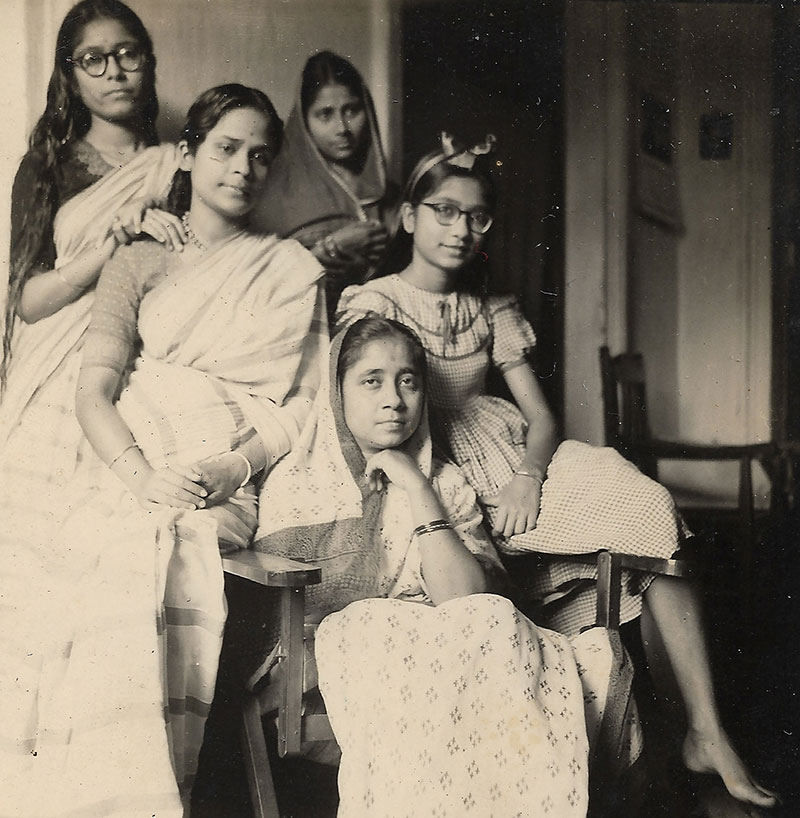Zoom In
Exhibition Review
PhotoMail constructively and
Critically zooms into
The life and work of photographers
Its art and techniques
Contemporary theory
Aesthetics, material philosophy and
Sociology
Tulsi Swarna Lakshmi
reviews
Contemporary Heroines
Abul Kalam Azad‘s
Solo Show at Trikkana Mathilakam Porulukal
Silappthikaram Festival 2015
Mathilakam, Kerala
15th – 17th May 2015
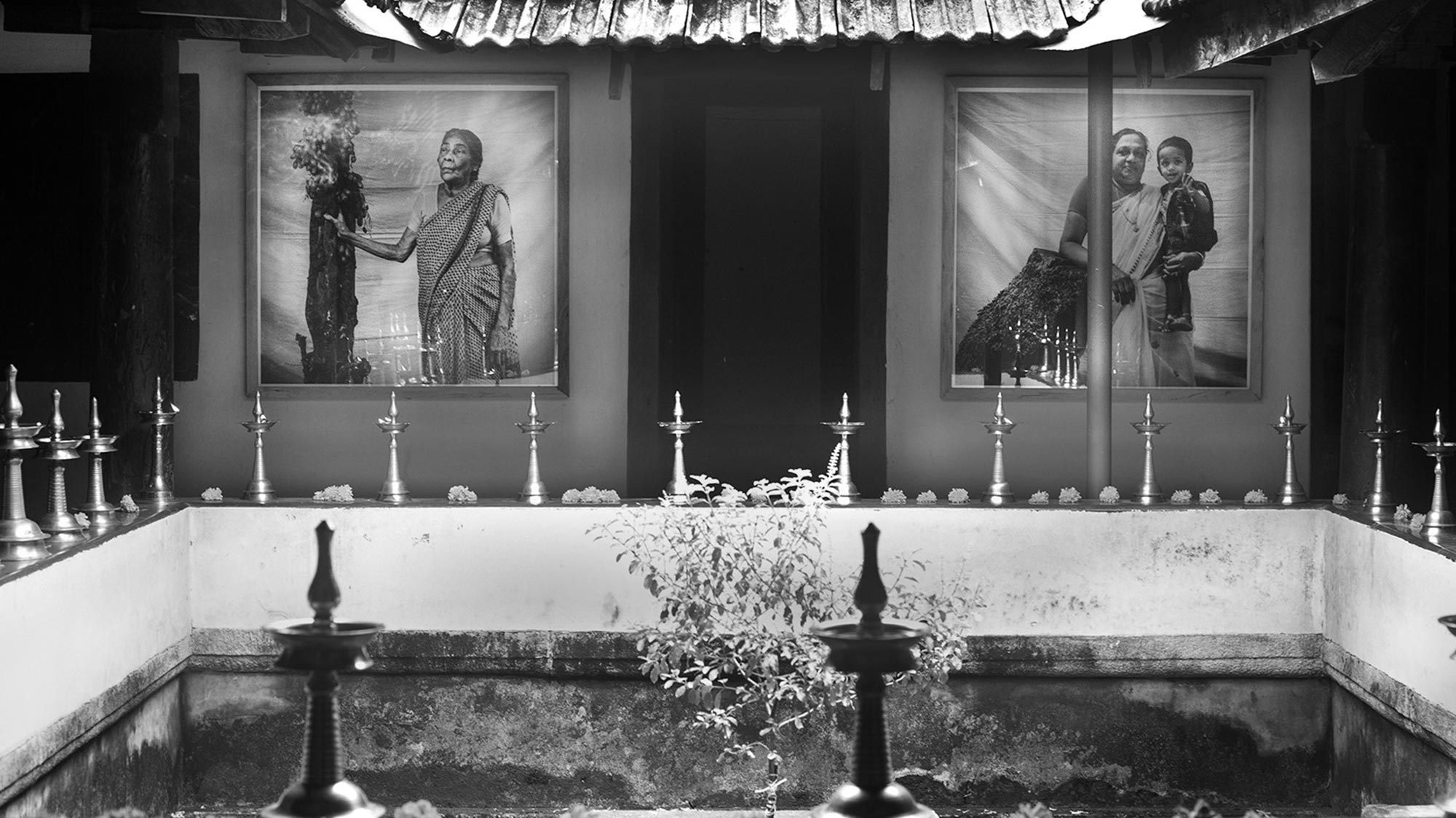
Contemporary Heroines Exhibition View © Abul Kalam Azad | Trikkana Mathilakam Porulukal, Silappathikaram Festival 2015
Contemporary Heroines
Celebrating Local History
Photographer Abul Kalam Azad’s solo show titled ‘Contemporary heroines’, a portrait series of women in Mathilakam was was presented by Ekalokam Trust for Photography in the month of May 2015 as part of the Trikkana Mathialakam, Silappathikaram festival 2015. The show was organized at Mathilakam itself, in a traditional Kerala-style family house. Mathilakam is a small village in the Thrissur District of Kerala, India and is believed to be the Sangam period Trikkana Mathilakam or Gunawayil, which was an important cultural and Jain learning center. Historical evidence suggest that Ilango Adigal (2nd century CE), the ancient Tamil poet created the epic Silappatikaram while he was living in Trikkana Mathilakam.
This recent portrait series by Abul is a continuation of his popular and widely written Black Mother, part of Story of Love, Desire and Agony, a non-illustrative work based on the Tamil epic Silappathikaram. Having been a photographer for more than four decades, Abul’s works have been exhibited widely in India and abroad and given his background, this exhibition organized at the traditional family house ‘Parvathi Sathanam’ in Mathilakam, is unusual and challenged the prevailing norms of contemporary art practices in both content, form and presentation. The stark monochromic bromoil prints (32”x32”) from Black Mother I depict the ritualistic performance by oracles in Kodungallur Bhagawathy temple in Kerala. Local myth and historical texts say that the presiding deity is Kannagi – the heroine of the Silappathikaram. Every year, during Bharani Festival, these men and women oracles re-enact a scene from the epic which was originally told as folklore. The photographer presents the primordiality of the feminine form – the primitiveness of which is intense in these non-graphical analogue photographic prints.



Contemporary Heroines (From the Story of Love, Desire and Agony series) © Abul Kalam Azad 2015
After a gap of sixteen years, Abul has continued this Black Mother series with portraits of the contemporary women of Mathilakam. The women pose poignantly, sitting or standing, in front of the loosely held background screen, its natural folds and light flow made each image a unique and singular work of art. The deliberate inclusion and omission of certain plants, landscape, and objects signify the contemporary lifestyle of this ancient land, its people and culture. The women in the portraits are the ones we see every day. However, in the photographs each woman becomes a heroine of an untold epic. They appear more beautiful, majestic, profound or sometimes even sad and melancholic – the visually striking violence of Black Mother I and serenity of the Black Mother II could also possibly reflect the personal transformation and insight the artist has experienced over the period.
Abul’s work often questions the impact of geographical divisions and religious disparities. The tri-sangam period Tamilakam as mentioned in Silappathikaram was characterized by the coexistence of people from different faiths and religions. By delving deeper into this epic and focusing on people from different religious, class and caste backgrounds, the photographer boldly raises the issue of ‘identity’ that greatly affects contemporary Indian society.
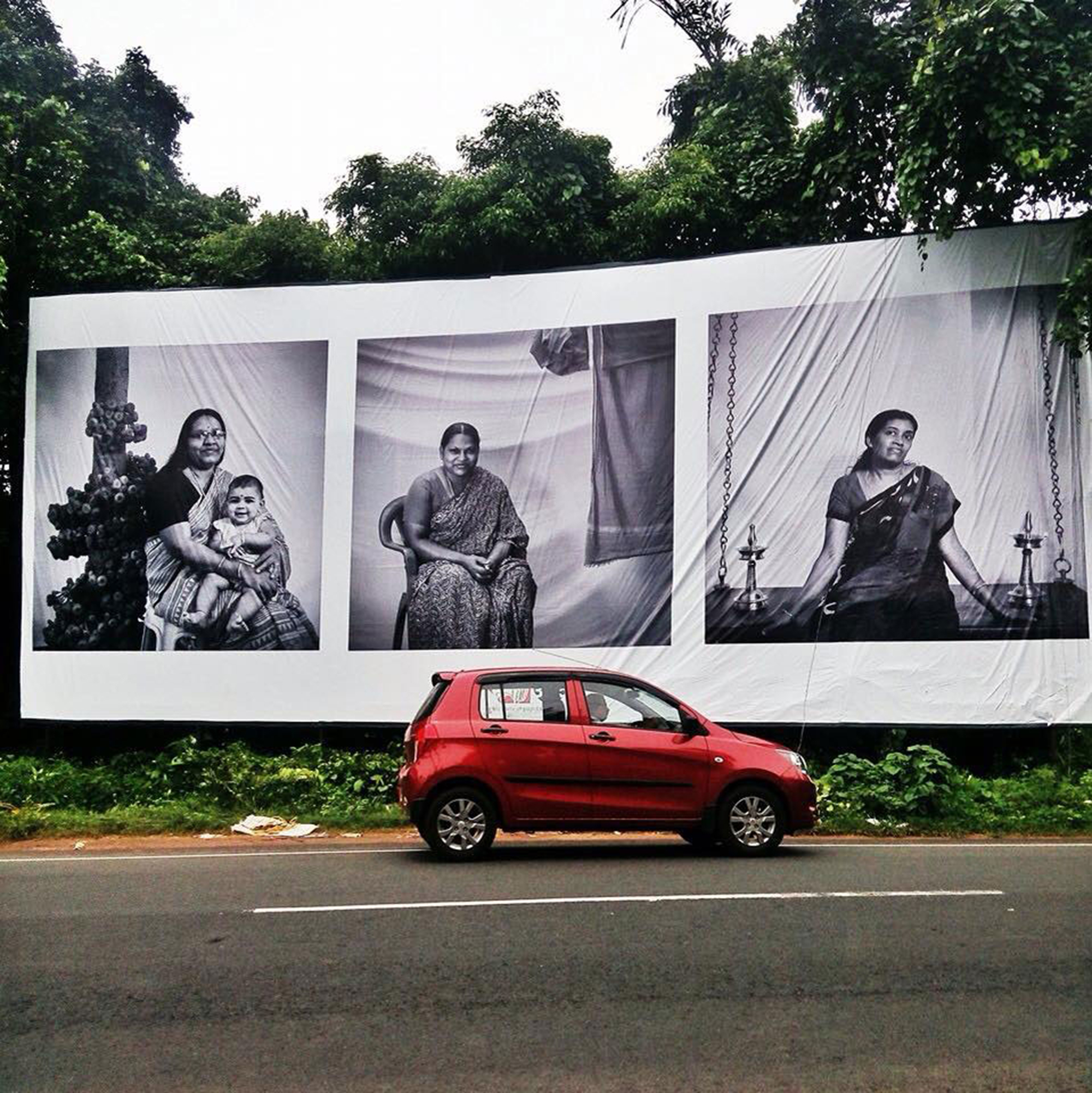
Bill board installation (In progress) of Contemporary Heroines
It is Abul’s search for his own cultural roots that urged him to work for a protracted period on this epic. Born in a progressive Tamil Muslim family, Abul started traveling at a very young age. His quest took him to different lands across the country as well as he had a decade of exposure to the western world. Black Mother I done immediately upon his return to India was his probing into the origin of gods. Just before his return to India, he had done another series titled ‘Goddesses’. In this experimental body of work, Abul had collected sex call cards that are so common in soho, London, scanned and enlarged the image, and made hand sequence works on the precious silver gelatin prints. The cultural disparity between the nations he had traversed and the unsettling quest to find out the roots of this multi-faceted world order inspired him to start this two decade long project. “It is not yet complete”, says Abul, who plans two more intense body work based on the epic Silappathikaram.
Visual art works based on scriptures have for long been illustrative. Michelangelo’s work in Sistine Chapel and the Indian miniature painters are examples of this tradition. Black Mother I & II by contrast represents the contemporary society and its females, just as the characters in Silappatikaram is bound to have been derived from the immediate society of that age. The style of creating an independent body of photographic work based on an ancient cultural text is unique. The photographer opted to exhibit these prints in the very village in which they have been created, that too in a contemporary living space. Exhibiting in a contemporary living space had its own advantages and challenges. The large sized (4ft x 4ft and 3ft x 3 ft) archival museum quality prints were juxtaposed within the existing interiors of this family house. Natural sunlight flowing through the central open courtyard is the only lighting for the exhibits.
This lack of “eliteness” beckoned a more rural audience and indeed, most of the viewers were friends and families of the villagers, who came from far and near. Bill boards (120 ft x 180ft) of contemporary heroines were exhibited on the main roads and highway nearby, breaking into a landscape dominated by commercial advertisements. The repositioning of contemporary photo-art amidst the rural public is a welcome change. While most Indian art initiatives present photo-art as a viable commodity to the urban and international audience, here is an attempt in the right direction, paving the way for art to be rightly recognized as a symbol of one’s culture and as the property of the people.
1. One of the women photographed visiting the show with her family 2. Left to Right: Riyaz Komu; co-founder of KMB; VS Sunil Kumar, Hon. Agriculture Minister; and Sadanand Menon, Art Critic visiting the exhibition; 3. Photographer Abul Kalam Azad with Sadanand Menon, VS Sunil Kumar, Hon. Minister, and Kavitha Balakrishnan, curator, Trikkana Mathilakam Porulukal, Silappathikaran Festival 2015 , and 4. Visitors at Contemporary Heroines Show at Mathilakam, Kerala

Tulsi Swarna Lakshmi is a writer and film-maker. She has more than a decade of experience working with leading National and International Non Government Organisations in India, Africa and South America. She is the Founder Managing Trustee of Ekalokam Trust for Photography and Executive Editor of PhotoMail.
Published on July 28, 2016
Share
Related Articles

In my taxi, when a photo artist becomes a cab driver
What motivated Weideman to keep photographing? The answer to this is also an important quality that makes his photographs intriguing. He continued shooting even though he was not exhibiting nor getting into any sort of limelight until the mid-90s. Passion for the medium, of course. But there is more.
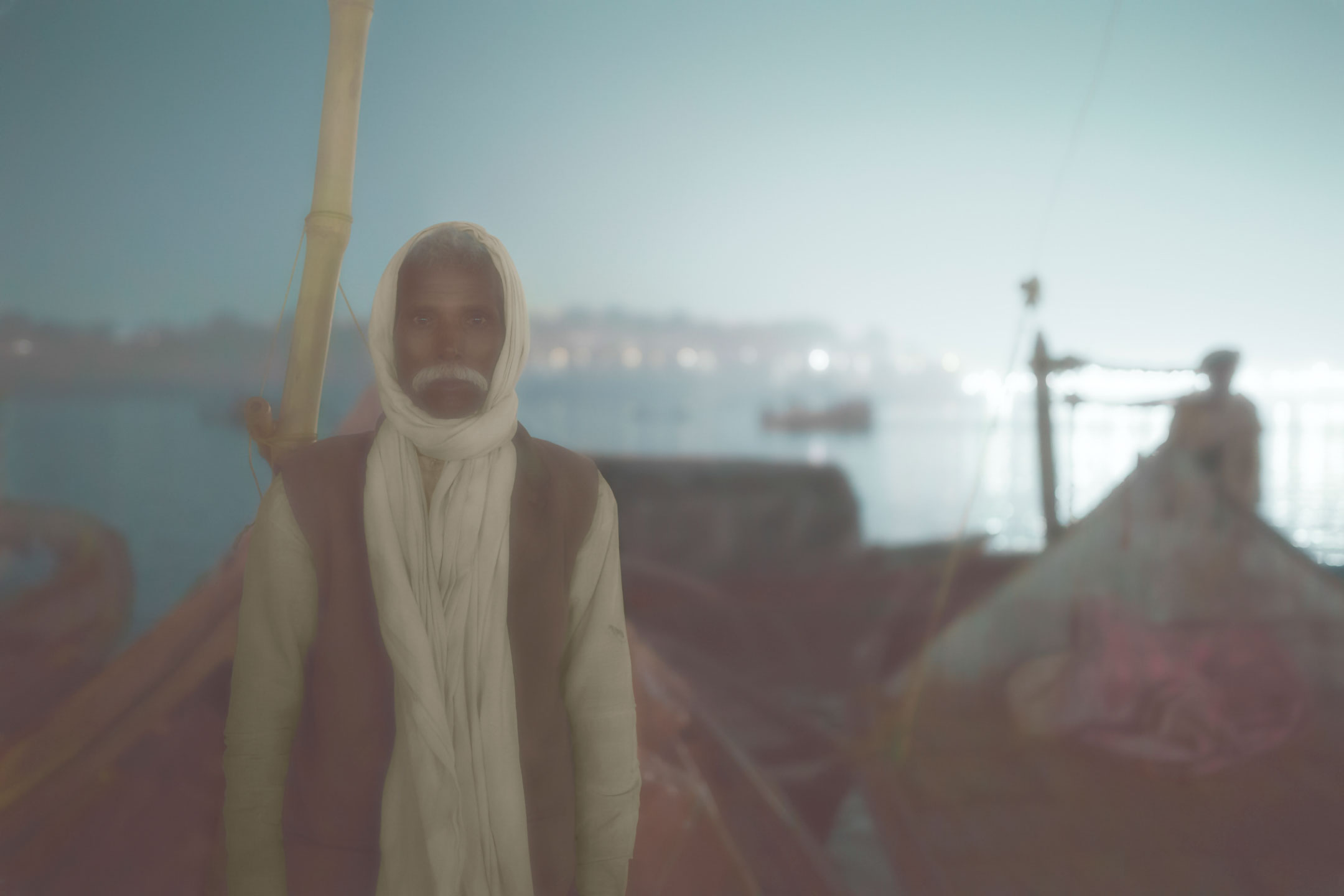
Mallaahs, the boatmen of Gangetic geography, A Photo Art series by Shibu Arakkal
Review of Mallahs, the boat of Gangetic geography, photographic series of Shibu Arakkal. For several hundred years these boatmen on the Ganga and the Yamuna have handed down their oars from father to son. I was intensely drawn to the purpose of their lives, to carry people back and forth on these rivers. Almost married to their boats, these men. To live almost all of their lives on these wooden vessels, going about their worldly chores and belonging to a tribe of menfolk, they pride themselves on being the real caretakers of these mystical rivers. Almost as if they are born on these boats and just as possibly may breath their last on it, the Mallaah men live lives removed from their families and children.
In search of the lost home
Across the world there are ongoing attempts to construct a ‘people’s history’ through photographs. Memory Projects, they are fondly called, focus mainly on the pre-digital era when photography was not as common as today. Bengali photographer Anandarup Goswami’s photography series ‘A Home of No Return’, though not directly linked with any memory project, shows certain resemblances with the latter’s style, and yet carries its own soul. A Home of No Return visually narrates the past and the present through a mixture of faded and fresh photographs.
Homomorphism II
The LGBTQ community has found for itself public spaces in urban regions. We will wait and see what they want to tell the world from that space. After all, solidarity with the cause does not mean solidarity with the acts, and it is time for the community to begin to act convincingly. This exhibition is a good starting point, and further on, there is a desperate need for clarity on the part of the activist-artists.

Elements and Fragments, Uncovering Narratives of a Temple Town
Inasmuch, every photographer that ever visited Tiruvannamalai never took notice about anything other than Ramana and the Annamalaiyar temple – their eyes glossing over everything else and their focus devoted entirely to the two ‘divine’ icons. But, there remains a Tiruvannamalai beyond, which has gone unnoticed and undocumented – invisible to the colonial gaze that is pre-occupied with its exotic fairy tales, and underwhelming for the photojournalist due to its perceived mundane-ness.


